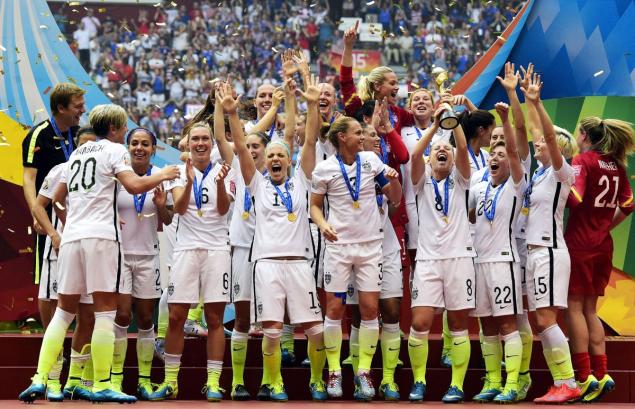
A fitting analogy for the camps debating men and women soccer pay parity would be Wall St traders vs IT workers. Traders mostly make their money through bonuses for making millions of dollars for Goldman Sachs while IT workers provide an essential service but cost money, so they get paid salaries. Men soccer players make their money through bonuses while women players are salaried. This obviously is an over simplification. Women’s soccer obviously makes revenue but those numbers need to be crunched to get an exact figure as do the compensations.
Julie Foudy in the wake of the US Women’s lawsuit against US Soccer did some digging and she discovered the existence of an decade old equalizing clause as part of a CBA put into place after the Athens Olympics.
“If in any calendar year, the ratio of aggregate compensation of women’s national team players to the aggregate revenue from all women’s national team games (including all games in U.S. Soccer promoted women’s tournaments) is less than the ratio of the aggregate compensation of the men’s national team players compensation to the aggregate revenue from all men’s national team games (including all games in U.S. Soccer promoted men’s tournaments), then U.S. Soccer will make a lump sum payment to the women’s national team player pool to make the ratios equal.
VIX. Additional Payment if Compensation Ratios Change.”
US Soccer said this clause is still operational carrying to their present CBA.
As Foudy explains this CBA assumes marketing for men’s and women’s game is equal and that historically has not been the case but one could safely assume the numbers are more even at present. However, a big stumbling blocks is all the commercial streams are funnelled into one entity, Soccer United Marketing, aptly abbreviated as SUM. The SUM of all fears? The whole is greater than the SUM of all its parts? How does one interpret those numbers and where does that money go to?
However, as this very good article by Beau Dure lays out the case – the point of the lawsuit might be just that, to force out such disclosures. Equal pay for equal work will bring on the detractors but the uncovering of the nebulous world of soccer money is something everyone can get behind. Once the data is known, concrete steps could be taken to better address pay parity. US Soccer deserves some praise for that clause but as in so many instances principles are one thing, execution of that principle, yet another. The resolution of these issues carry implications as the article points out, in the rejuvenation of the US national team as well as the future of the National Women’s Soccer League (NWSL). On a personal angle, the lawsuit could also be instrumental in resurrecting the names of some of the high wattage lawyers chosen to represent the women players.